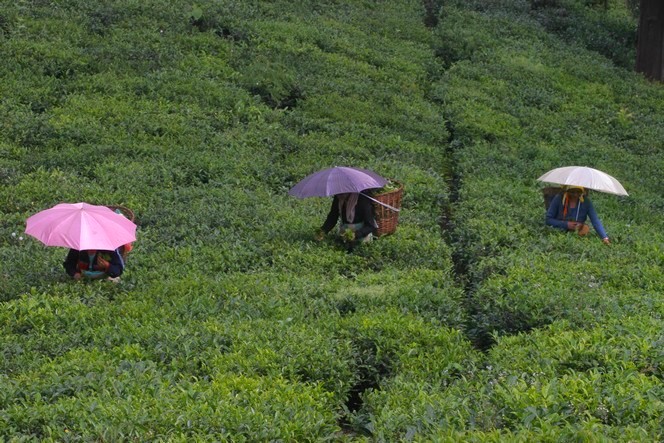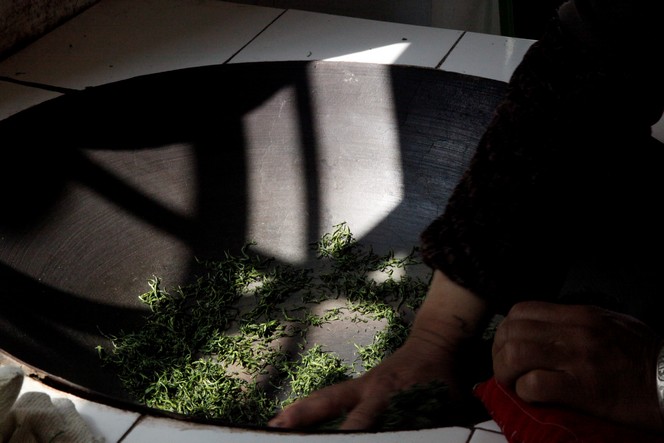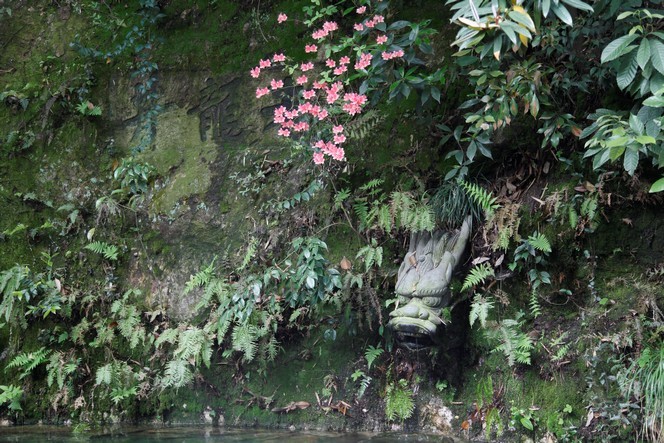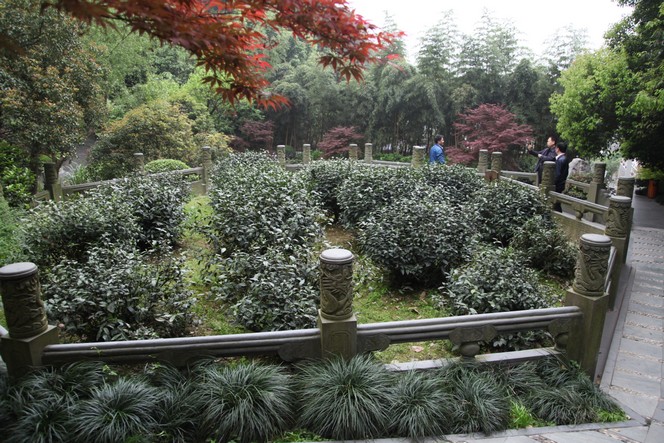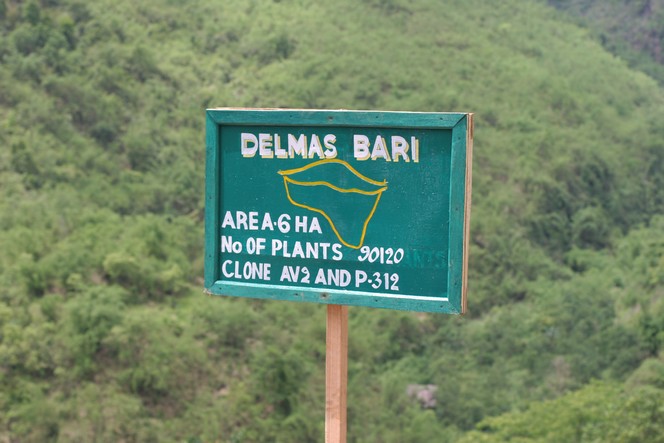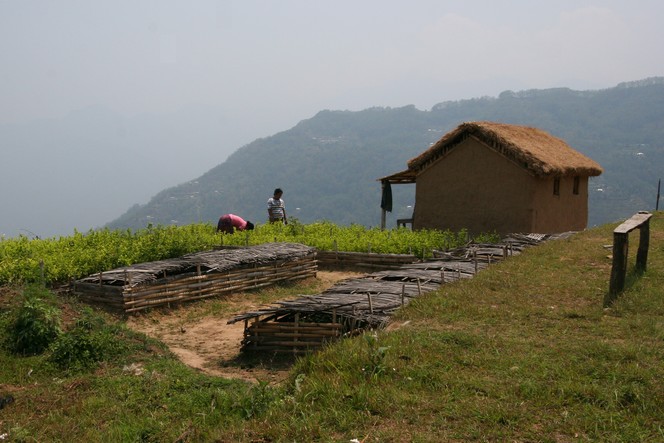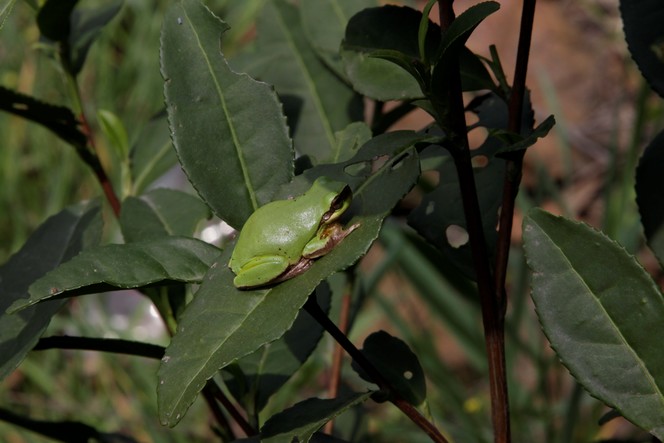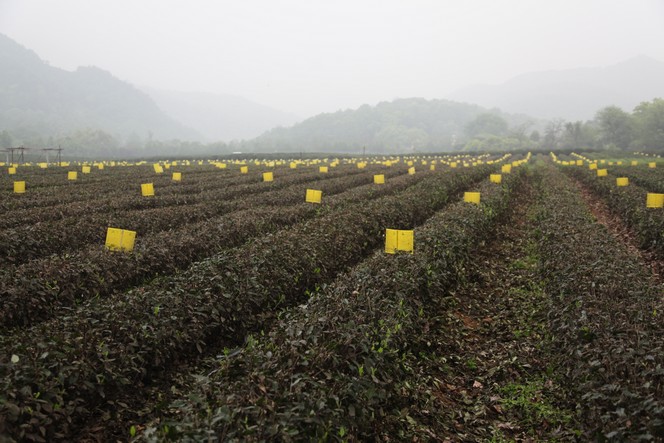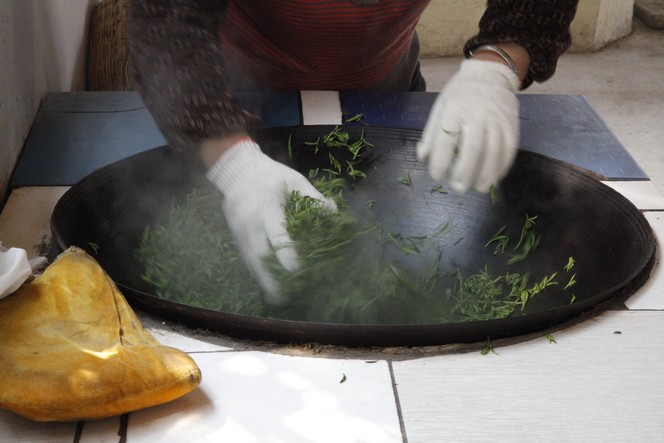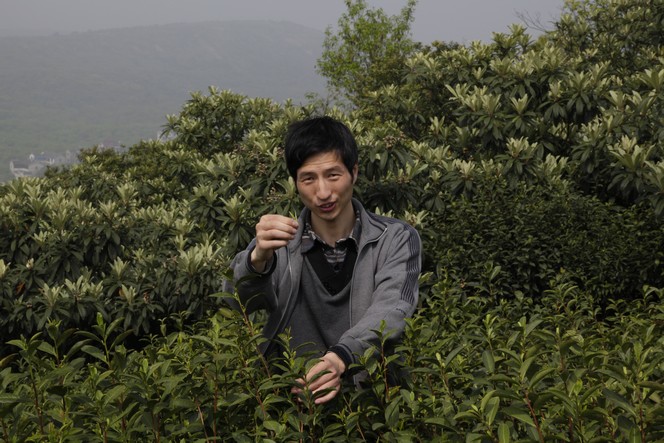With the weather we’ve had this June, there has been no need to worry about sunstroke. This is not the case everywhere. For example, in Darjeeling this season, when the pluckers have brought out their umbrellas it has been to protect themselves from the sun, not the rain. The women have good taste in their choice of bright, varied colours, making this landscape very similar to a cup of Darjeeling itself. Its floral, flowery, vegetal notes are a real treat for the palate.
From plant to cup
Processing tea leaves in China
Here, near Hangzhou (China), the tea leaves are being processed on the scorching sides of the wok. The leaves are heated before being shaped as required, then dried. They must be processed quickly and precisely, which is why many farmers prefer to work with their bare hands.
The beautiful source of the Dragon Well
This is for fans of Long Jing. This is the source of the Dragon Well that gave its name to this prestigious tea and to the eponymous city. It is a few kilometres from Hangzhou (China).
Long Jing: a tea sold 36,000 euros per kilo
A visit to 18 imperial Long Jing tea plants is an essential stop on the tourist trail around this region. These tea plants owe their status to emperor Qian Long who wanted to demonstrate his love of the famous “Dragon Well”, which remains one of the finest China green teas today.
Supposedly dating back to the 18th century, I wonder whether these shrubs have not in fact been discreetly replaced since then, as some of the stems do not appear as old as that. But for the buyers, this seems of little importance given the price at which their small but ultra prestigious harvest of leaves sells for: 36,000 euros per kilo!
The first tea from “Delmas Bari” has just arrived
It must be nearly 10 years since a plot of land on the North Tukvar estate was given my name. In high season, these hectares produce a remarkable tea thanks to the skill of the planter, of course, but also because of the quality of the tea plants selected. They are among my favourites.
For the first time, a single lot of tea from this plot has arrived in Paris. For fans of delicate, fruity, vegetal notes and the fragrance of white flowers, this is its name: Darjeeling North Tukvar DJ14 Delmas Bari.
Tasting new teas is like a bowl of fresh air
While many of you are taking advantage of the long weekend of the Ascension holiday to escape to the country, I’m in Paris at my tasting table with an impressive number of samples before me. I won’t have time to taste them all over the weekend. In Darjeeling, the harvests are over, but I’m now receiving new-season green teas from China, all very fine examples indeed. Every year, their vegetal aroma is like a big bowl of fresh air. I’m also getting sent most of the Nepalese teas which, in nearly a decade, have achieved excellent standards. New gardens are joining them and making themselves known. Excellence is worth waiting for – it has taken them years to reach this point. Just like these young tea plants, which are receiving such attentive care.
Leaves of the tea plant also attract frogs
The leaves of the tea plant attract many predators, undoubtedly due to their delicious taste.
In addition to its gastronomic qualities, tea is supposed to promote wellbeing and serenity. This harmless frog, very much at ease, would surely agree.
Panels for trapping harmful insects
On the tea plantations there are plenty of ideas for trapping harmful insects. For example, here in Hangzhou, they place little panels covered in glue everywhere among the tea plants. The fluorescent yellow of the boards attracts the insects, but most of all it is the pheromones in which they are coated that appeals so much to bugs.
These are clearly unrelated to all the election boards that are flourishing, right up until this weekend, all around our voting stations.
My niece Aurélie launched Le Palais des Thés US
Twenty-five years ago I created Le Palais des Thés to turn my passion into a job, and to share with other enthusiasts the pleasures of tasting the world’s best teas. Since she was little, my niece Aurélie has always seen me with a cup of tea in my hand and has listened to my stories of distant travels to the plantations of China and Japan. A year ago, Aurélie, who has grown up to be a great connoisseur of tea herself, decided to start an exciting new venture and a fantastic challenge. Accompanied by Cy, her husband, she has decided to move to the United States and write a new chapter in this family story, by launching Le Palais des Thés in North America.
I am hugely proud of my niece and I know she will succeed – I have seen how passionate she and her husband are. They have a pioneering spirit.
Bi Luo Chun: one of the rarest China teas
Bi Luo Chun is one of the rarest and most prestigious China teas. Here, my friend Waterqian – one of the few farmers to produce the highest quality Bi Luo Chun – is showing me how much must be taken off the stem during the harvest: a small bud with just one leaf. This type of plucking is extremely rare. It explains the very high price of this tea, whose name means “Spiral of Spring Jade”. In one day, each worker only harvests around two kilos of fresh leaves which, after processing, will produce just two hundred grams of tea.

